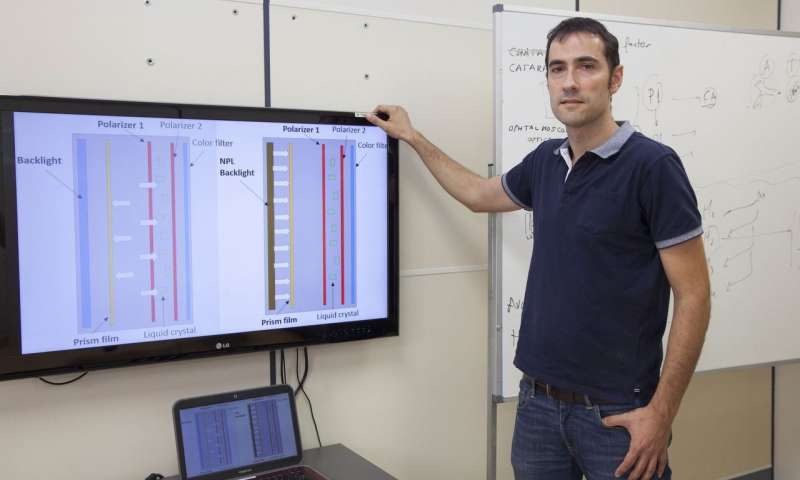
Climente explains the new nanoplatelets. Image: Asociación RUVID
Researchers at the Physical and Analytical Chemistry department of the Universitat Jaume I (UJI) of Castellón, Spain, have taken part in the design of semiconductor nanoplatelets with a broadened range of colors to improve LCD and LED screens, thanks to an international collaboration headed by the University of Ghent.
The results of this research, in which the ICFO-Barcelona and the Italian Technology Institute also took part, has been published in Nano Letters.
Physical Chemistry professor at the UJI Juan Ignacio Climente explains that the semiconductor structures for optical devices heretofore “offered intense and pure purple and green colors, but the output of other colors was lackluster. With a synthetic innovation, this study has made it possible to broaden the optimal results to yellow, orange, and red.”
The joint work by the Quantic Chemistry Group of the UJI, coordinated by Professor Juan Ignacio Climente along with the research group of Dr. Iwan Moreels and experts of other European universities, has led to significant progress in the development of semiconductor materials for optic devices.
Specifically, according to Climente, “We have conducted mechano-quantic calculations that show that the new colors of the light emitted are a result of the nanoplatelet’s greater thickness synthesized by our partners, which offer new knowledge on the unique optic properties of these materials.”
“The new synthetic route enables the broadening of the traditional thickness (3.5-5.5 layers of atoms) to 8.5 layers.”
The semiconductor nanoplatelets are intended for the second generation of so-called quantum dot displays by offering more pure and intense colors than current technology for LCD or LED screens. Furthermore, these nanotechnological materials may also be added to laser devices and optic sensors.
The Quantic Chemistry Group of the Superior Technology and Experimental Sciences School of the UJI specializes in the theoretic study of nanocrystals. Its researchers model these systems with quantic mechanic tools to understand and predict their physical behavior.
Recently, this group showed that the new semiconductor nanoplatelets synthesized in laboratories can improve the luminosity of LEDs, lasers and LCD screens of computers or televisions as they make it possible to minimize energetic losses compared to current semiconductor materials.
Source: Asociacion RUVID




